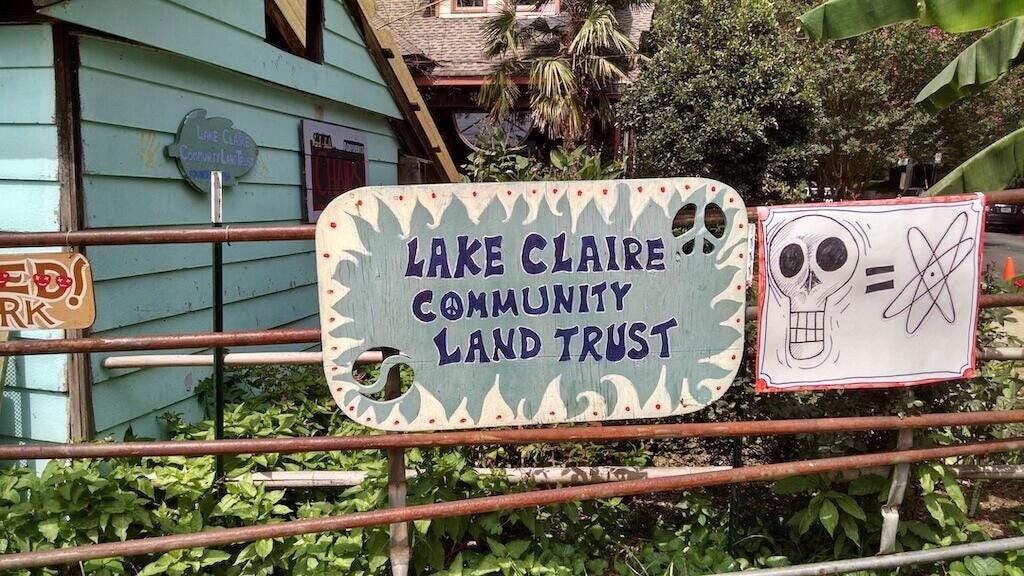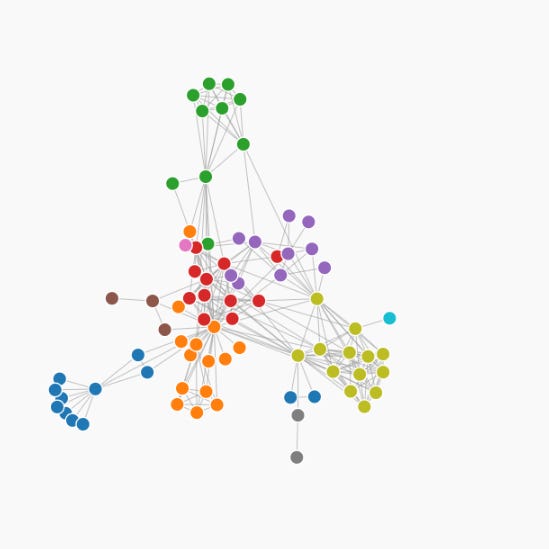Trust-centered community
On the importance of love, trust, self-awareness, metacognition, and radical honesty in creating and sustaining community.
Intro
We create community with every interaction whether we intend to or not. Our encounters with the natural world constitute our ecological community. The people, plants, and animals we live in close proximity to constitute our local community. Every online interaction constitutes a wider parasocial community founded on shared concepts and interests. While we may default to defining community more narrowly, based on the quality and frequency of our interactions, the truth of our existence is inextricably linked with the communities of reciprocity that support our life.
The concept of community did not formally appear in my personal journey until I was in college. While I certainly experienced the benefits and pitfalls of platonic and romantic relationships prior to that time, I had not thought of these interactions as collectively as community. I discovered conscious community when I encountered the Lake Claire Land Trust in Atlanta, Georgia (lcclt.org). I attended their communal drum circle as a listener and later a participant, and began to meet people through my participation in and growing curiosity about how the Land Trust, as it’s colloquially called, came to be. My curiosity led me to connect with the founders and community members who carried the story of the Land Trust’s origins and also shared in the commitment to cultivating and caring for the land and community that gathers in its midst.
My introduction to dynamic governance began in the Spring of 2008, when one of the Land Trust’s stewards invited me to a strategic planning committee meeting.There, I discovered a new governing model: one that prioritizes structured collaboration and vulnerability; its participants’ visions and values about how best to support their natural oasis nestled within urban Atlanta were encouraged and honored. Taking turns sharing the floor, communicating their ideas, inviting feedback and collaboration, and facilitating lively discussion about topics dear to their hearts, the participants forged a plan for the year that followed. I was both fascinated and fully enchanted by the experience, and that was likely the moment the seed was sown for my future interest in systems of community self-organization.

Since then I’ve come to recognize certain unifying traits of communities within cities, countries and the wider world.
Broadly, healthy relationships between communities correlate to the depth of its members’ embodiment and quality of their consciousness during interaction.
Within the community, the richness of the collective inner worlds, interpersonal relationships of its members, and relationship with the living ecology of its location, forms its own, complex, microorganism.
The psychological and physiological dynamics within communities mirror the six types of ecological interactions: mutualism, commensalism, amensalism, parasitism, competition, and mimicry.
These interactions extend outward to the inter-community macrocosm, forming second-order relationships between communities.

While I’ve moved a number of times throughout my life, I’ve made an effort to embed myself within the fabric of the communities I’ve found, in (hopefully) beneficial ways, as both an observer and as a participant. My interests vary widely, and I’ve thus found myself in the role of cross-pollinator or synchronizer between communities I have affinity with, wherein I help foster a mutually beneficial bond between said communities. This fabric of communal connection sometimes forms in a sustainable way, and sometimes, dissolves in my absence. With smooth and not-so-smooth transitions into and out of communities, I’ve attempted to synthesize what I’ve learned along each adventure and what follows is my best approximation of the essential ingredients for sustaining communal bonds.
Philosophical Foundations
Love is the openness to what is, which forms the front door of community. Love, when emanating from conscious intentionality and self-awareness, leads to trust. Self-awareness is knowing oneself across time and diversities of circumstances. And with trust comes the ability to be fully present and responsive in relationships with others.
Trust grows with time, consistent action, and depth. Depth is the ability to center one's consciousness into core motivations and communicate them in a direct and evocative manner to engender empathy and shared interest. From shared empathic experience, self-awareness expands into group awareness as the experience is perceived from multiple people's perspectives. These are woven into a secure meshwork of trust between members of a community as individual perspectives are metabolized into the whole. Shared touchpoints of memory are essential for stability; they foster mutual understanding and help synthesize the past with the present; reduce the reliance on extended elaboration, and smooth the way for radical honesty, authenticity, and alignment of hearts and purpose.
If love is the front door of community, metacognition is the floor.
If love is the front door of community, metacognition is the floor. On an individual level, it’s derived from the ability to fully inhabit one’s embodied emotional experience while simultaneously engaging with, and witnessing the nature of others’ lived experience. This allows one to consider multiple perspectives, and perceive the factual characteristics of specific events, along with one's own responses to the event. This builds a framework for greater mutual understanding, salience, and consensus about the nature of shared reality.
Metacognition can be taught through community, as the group illuminates the blind spots of the individual; bearing witness to, and shedding light on unanticipated or insufficiently considered consequences of their actions. As members gain greater trust with one another, they develop a greater capacity to attune to, cohere, and communicate from their collective metacognition, and to orient their role in relationship to the whole. This then forms the core of collective intelligence that sustains a community.
In this article we’ll explore methods for facilitating a trust-centered community into a self-organizing and coherent collective. This is inspired by my personal endeavor to educate myself on the practical implementation of structured collaboration towards shared ideals. This is the first installment of what will likely be a series of articles on dynamic governance and trust-centered community that starts with a dive into the popular self-organizing framework: sociocracy. Stay tuned for Part 2 where we explore a distilled overview of Sociocracy.






I loved the connection between love, metacognition, and collective intelligence. Very good article. I will be reading the rest of the series soon.
I'm also developing an app that allows people to easily check up on each other, fostering intentional connection. I’d love to hear your thoughts on it. I left a link to the post in your inbox. You can check it out when you have time, thank you.